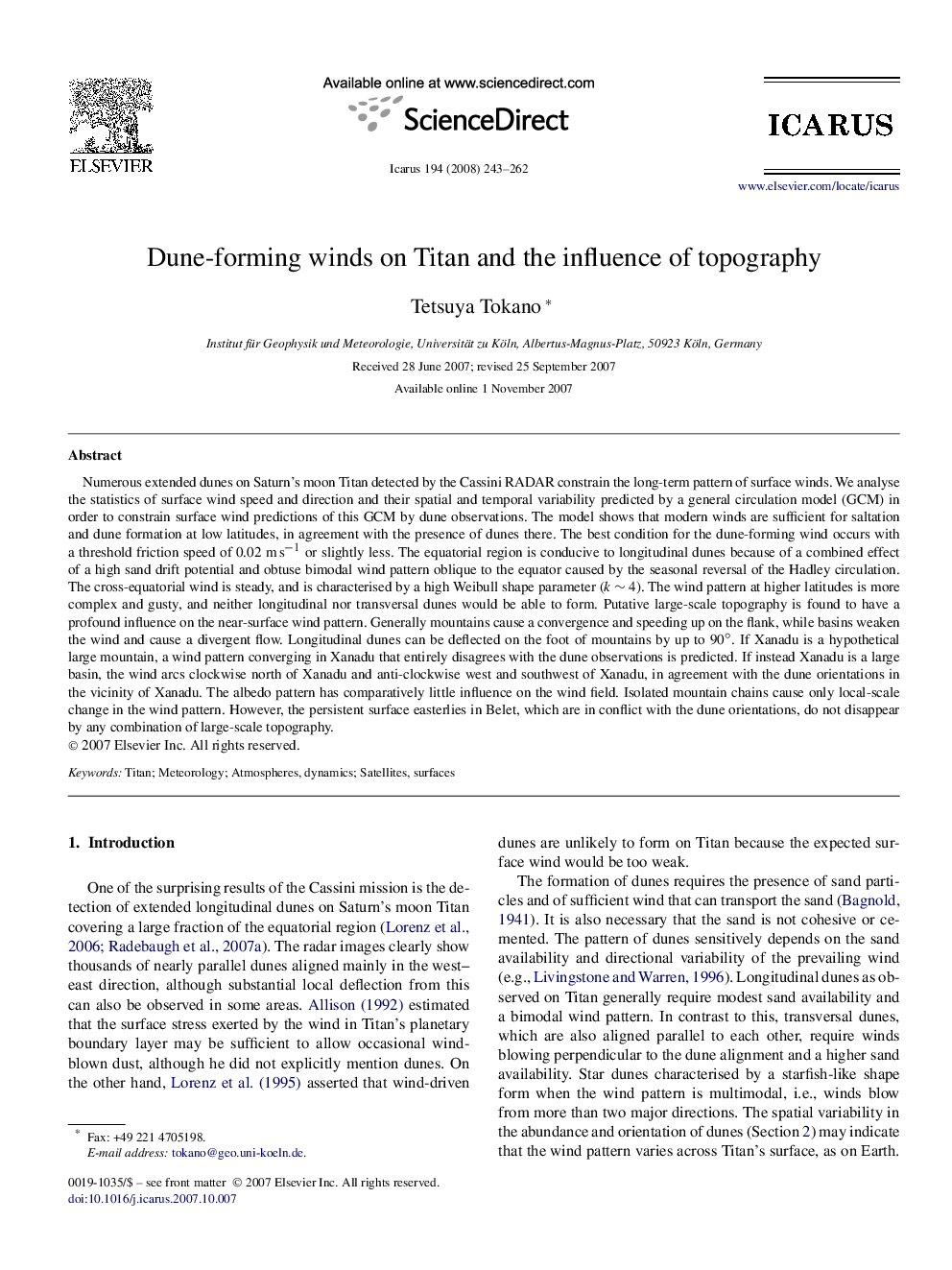| کد مقاله | کد نشریه | سال انتشار | مقاله انگلیسی | نسخه تمام متن |
|---|---|---|---|---|
| 1774936 | 1021179 | 2008 | 20 صفحه PDF | دانلود رایگان |

Numerous extended dunes on Saturn's moon Titan detected by the Cassini RADAR constrain the long-term pattern of surface winds. We analyse the statistics of surface wind speed and direction and their spatial and temporal variability predicted by a general circulation model (GCM) in order to constrain surface wind predictions of this GCM by dune observations. The model shows that modern winds are sufficient for saltation and dune formation at low latitudes, in agreement with the presence of dunes there. The best condition for the dune-forming wind occurs with a threshold friction speed of 0.02 m s−1 or slightly less. The equatorial region is conducive to longitudinal dunes because of a combined effect of a high sand drift potential and obtuse bimodal wind pattern oblique to the equator caused by the seasonal reversal of the Hadley circulation. The cross-equatorial wind is steady, and is characterised by a high Weibull shape parameter (k∼4k∼4). The wind pattern at higher latitudes is more complex and gusty, and neither longitudinal nor transversal dunes would be able to form. Putative large-scale topography is found to have a profound influence on the near-surface wind pattern. Generally mountains cause a convergence and speeding up on the flank, while basins weaken the wind and cause a divergent flow. Longitudinal dunes can be deflected on the foot of mountains by up to 90°. If Xanadu is a hypothetical large mountain, a wind pattern converging in Xanadu that entirely disagrees with the dune observations is predicted. If instead Xanadu is a large basin, the wind arcs clockwise north of Xanadu and anti-clockwise west and southwest of Xanadu, in agreement with the dune orientations in the vicinity of Xanadu. The albedo pattern has comparatively little influence on the wind field. Isolated mountain chains cause only local-scale change in the wind pattern. However, the persistent surface easterlies in Belet, which are in conflict with the dune orientations, do not disappear by any combination of large-scale topography.
Journal: Icarus - Volume 194, Issue 1, March 2008, Pages 243–262